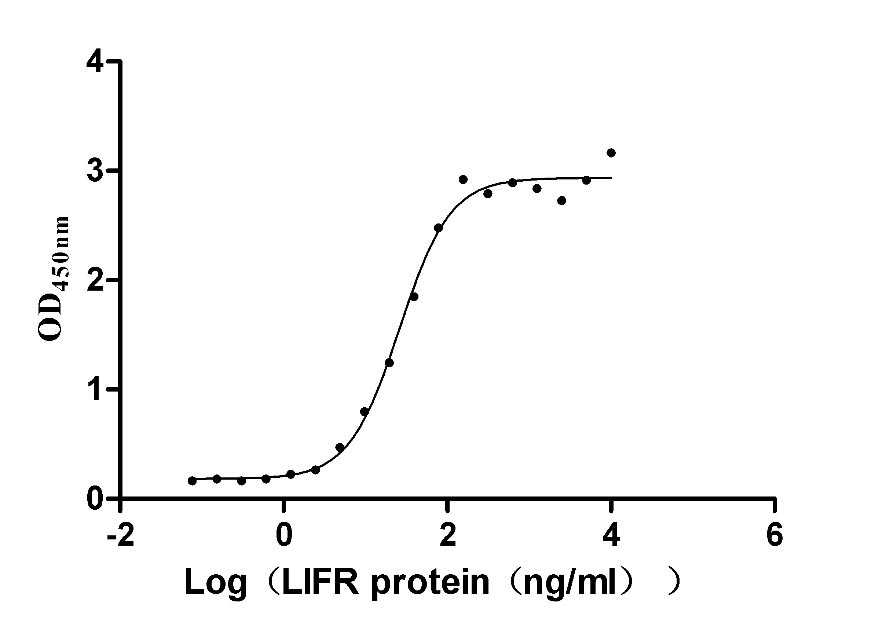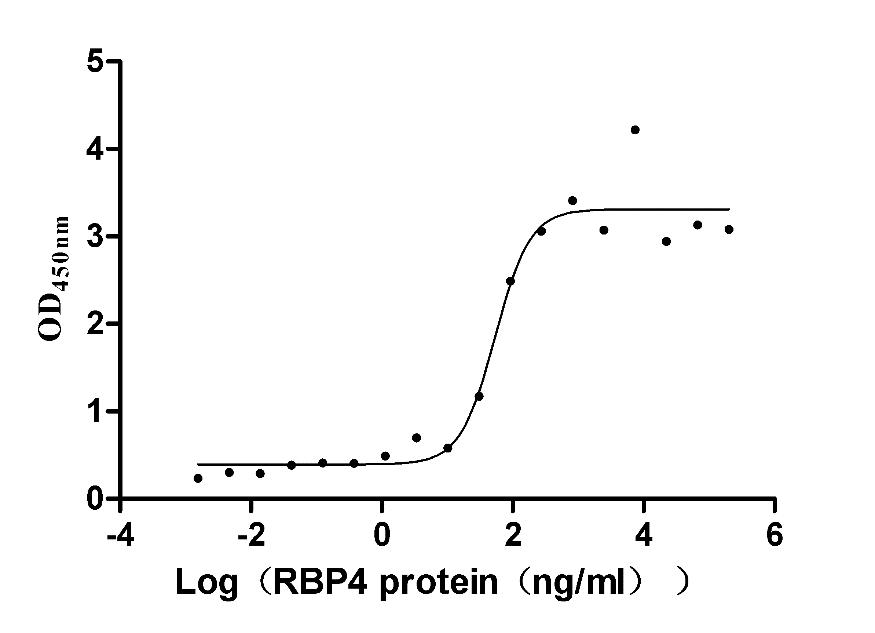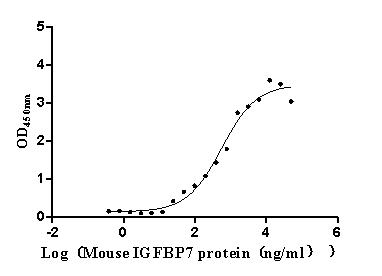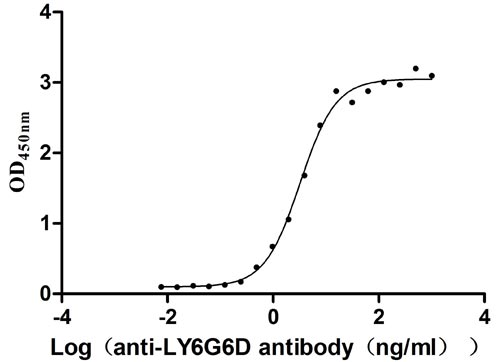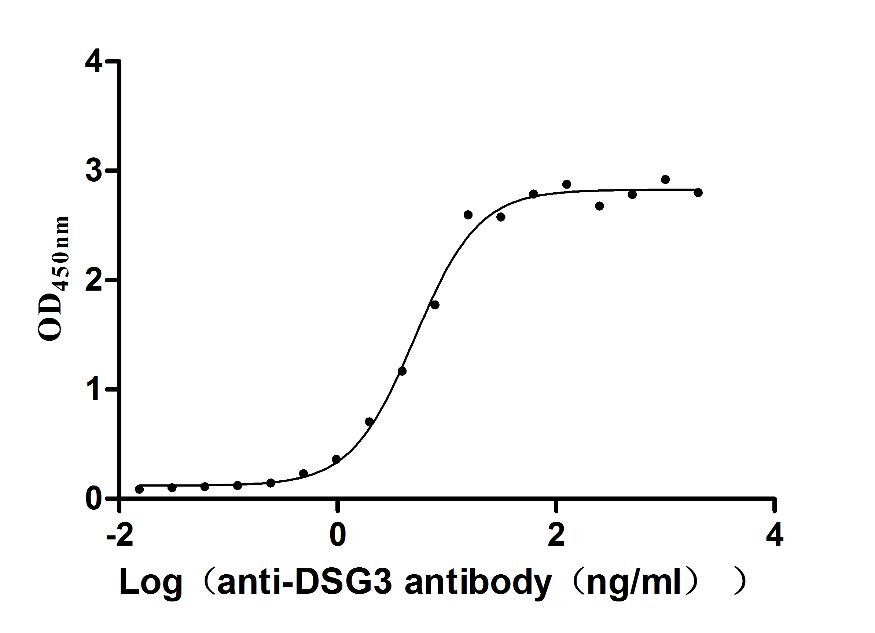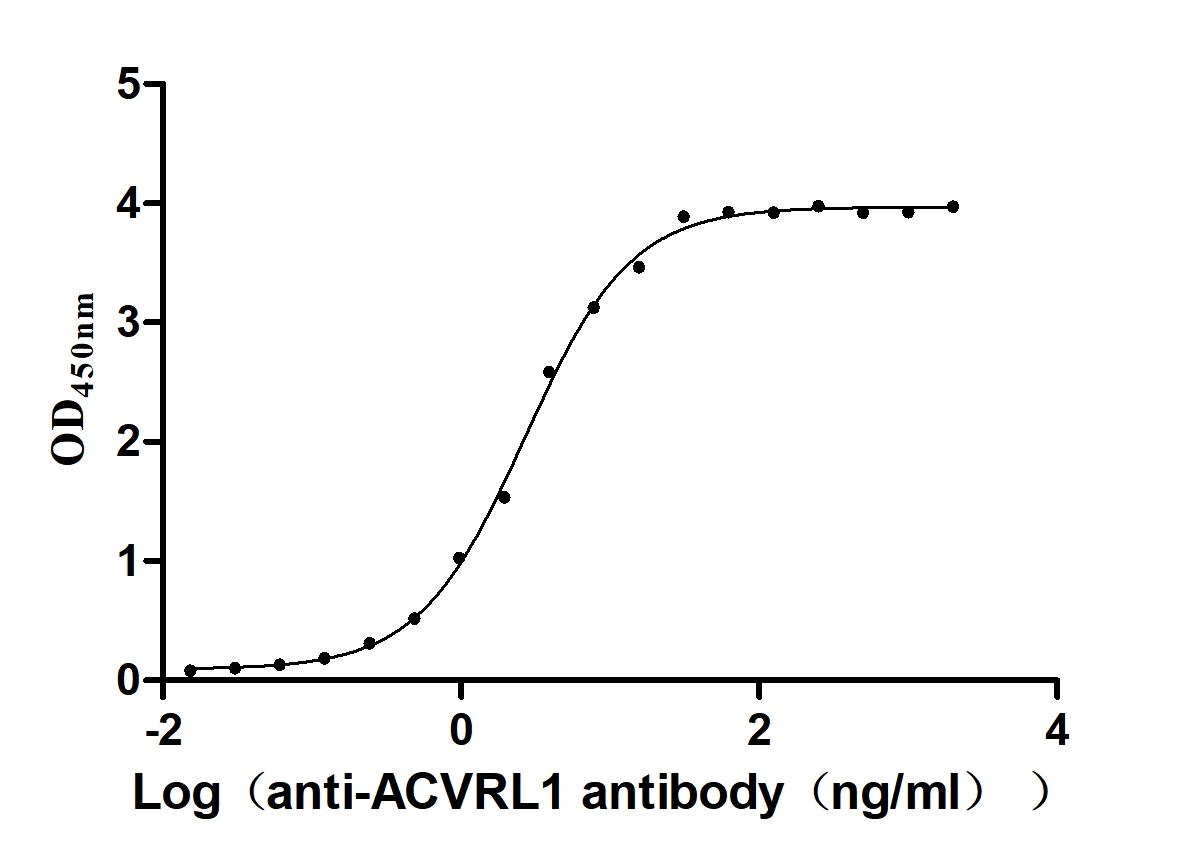Recombinant Saccharomyces cerevisiae Cell division control protein 48 (CDC48), partial
-
中文名称:Recombinant Saccharomyces cerevisiae Cell division control protein 48(CDC48) ,partial
-
货号:CSB-YP329570SVG
-
规格:
-
来源:Yeast
-
其他:
-
中文名称:Recombinant Saccharomyces cerevisiae Cell division control protein 48(CDC48) ,partial
-
货号:CSB-EP329570SVG
-
规格:
-
来源:E.coli
-
其他:
-
中文名称:Recombinant Saccharomyces cerevisiae Cell division control protein 48(CDC48) ,partial
-
货号:CSB-EP329570SVG-B
-
规格:
-
来源:E.coli
-
共轭:Avi-tag Biotinylated
E. coli biotin ligase (BirA) is highly specific in covalently attaching biotin to the 15 amino acid AviTag peptide. This recombinant protein was biotinylated in vivo by AviTag-BirA technology, which method is BriA catalyzes amide linkage between the biotin and the specific lysine of the AviTag.
-
其他:
-
中文名称:Recombinant Saccharomyces cerevisiae Cell division control protein 48(CDC48) ,partial
-
货号:CSB-BP329570SVG
-
规格:
-
来源:Baculovirus
-
其他:
-
中文名称:Recombinant Saccharomyces cerevisiae Cell division control protein 48(CDC48) ,partial
-
货号:CSB-MP329570SVG
-
规格:
-
来源:Mammalian cell
-
其他:
产品详情
-
纯度:>85% (SDS-PAGE)
-
基因名:CDC48
-
Uniprot No.:
-
别名:CDC48; YDL126CCell division control protein 48; EC 3.6.4.6; Cell division cycle protein 48; Transitional endoplasmic reticulum ATPase homolog
-
种属:Saccharomyces cerevisiae (strain ATCC 204508 / S288c) (Baker's yeast)
-
蛋白长度:Partial
-
蛋白标签:Tag type will be determined during the manufacturing process.
The tag type will be determined during production process. If you have specified tag type, please tell us and we will develop the specified tag preferentially. -
产品提供形式:Lyophilized powder
Note: We will preferentially ship the format that we have in stock, however, if you have any special requirement for the format, please remark your requirement when placing the order, we will prepare according to your demand. -
复溶:We recommend that this vial be briefly centrifuged prior to opening to bring the contents to the bottom. Please reconstitute protein in deionized sterile water to a concentration of 0.1-1.0 mg/mL.We recommend to add 5-50% of glycerol (final concentration) and aliquot for long-term storage at -20℃/-80℃. Our default final concentration of glycerol is 50%. Customers could use it as reference.
-
储存条件:Store at -20°C/-80°C upon receipt, aliquoting is necessary for mutiple use. Avoid repeated freeze-thaw cycles.
-
保质期:The shelf life is related to many factors, storage state, buffer ingredients, storage temperature and the stability of the protein itself.
Generally, the shelf life of liquid form is 6 months at -20°C/-80°C. The shelf life of lyophilized form is 12 months at -20°C/-80°C. -
货期:Delivery time may differ from different purchasing way or location, please kindly consult your local distributors for specific delivery time.Note: All of our proteins are default shipped with normal blue ice packs, if you request to ship with dry ice, please communicate with us in advance and extra fees will be charged.
-
注意事项:Repeated freezing and thawing is not recommended. Store working aliquots at 4°C for up to one week.
-
Datasheet :Please contact us to get it.
靶点详情
-
功能:ATP-dependent chaperone which probably uses the energy provided by ATP hydrolysis to generate mechanical force to unfold substrate proteins, disassemble protein complexes, and disaggregate protein aggregates. By recruiting and promoting the degradation of ubiquitinated proteins, plays a role in the ubiquitin fusion degradation (UFD) pathway. Has a role in the endoplasmic reticulum-associated degradation (ERAD) pathway which mediates the cytoplasmic elimination of misfolded proteins exported from the ER. Required for the proteasome-dependent processing/activation of MGA2 and SPT23 transcription factors leading to the subsequent expression of OLE1. Has an additional role in the turnover of OLE1 where it targets ubiquitinated OLE1 and other proteins to the ERAD. Regulates ubiquitin-mediated mitochondria protein degradation. Involved in spindle disassembly probably by promoting the degradation of spindle assembly factors ASE1 and CDC5 at the end of mitosis. Component of the ribosome quality control complex (RQC), a ribosome-associated complex that mediates ubiquitination and extraction of incompletely synthesized nascent chains for proteasomal degradation. CDC48 may provide the mechanical force that dislodges the polyubiquitinated nascent peptides from the exit channel. Required for ribophagy, a process which relocalizes ribosomal particles into the vacuole for degradation in response to starvation. Component of the DSC E3 ubiquitin ligase complexes that tag proteins present in Golgi, endosome and vacuole membranes and function in protein homeostasis under non-stress conditions and support a role in protein quality control. Substrate initially binds through the attached polyubiquitin chain to UDF1/NPL4 and then moves through the pore of the ATPase rings and is thereby unfolded. Acts on a broad range of even well-folded proteins via ubiquitin-binding and unfolding to initiate substrate processing. Involved in degradation of mislocalized tail-anchored transmembrane proteins extracted from the mitochondrion outer membrane by MSP1 and ubiquitinated by DOA10.
-
基因功能参考文献:
- Identify the Cdc48-Rad23/Dsk2 axis as a major route to the proteasome. PMID: 28525741
- Study elucidated the mechanism of Cdc48 from S. cerevisiae with purified components that include Cdc48 itself, its UN cofactor, and model substrates bearing K48-linked polyubiquitin chains. PMID: 28475898
- Multispanning endoplasmic reticulum membrane proteins, called ERAD-M substrates, are retrotranslocated to the cytosol as full-length intermediates during Endoplasmic Reticulum-associated Degradation, and this study investigated how they maintain substrate solubility. the Cdc48 complex is generally and critically needed for the solubility of retrotranslocated ERAD-M intermediates. PMID: 28077573
- Data show that Saccharomyces cerevisiae proteins Rqc1, Ltn1, and Cdc48 prevent the aggregation of aberrant proteins that can only appear after C-terminal alanine-threonine tail (CAT-tail) addition by Rqc2. PMID: 27129255
- Upon DNA damage Wss1/Cdc48/Doa1 ternary complex is recruited to sumoylated targets and catalyzes SUMO chain extension through a newly recognized SUMO ligase activity. PMID: 26349035
- The tethering of SCF(Dia2) to the replisome progression complex increases the efficiency of ubiquitylation of the Mcm7 subunit of CMG. Correspondingly, loss of tethering is synthetic lethal in combination with a disassembly-defective allele of CDC48. PMID: 26255844
- conclude that budding yeast Cdc48 functions downstream of the Ub ligases Ltn1 and Ubr1 to release nascent proteins from the ribosome so that they can be degraded by the proteasome PMID: 23358411
- This suggests that the ATPase activity of Cdc48p is necessary for fusion of the outer membranes of mitochondria. PMID: 24893221
- Cdc48 segregase is required to break ubiquitylated CMG helicase into its component parts. PMID: 25342810
- Cdc48-Ubx4 acts on the proteasome and uses the chaperone activity to promote its nuclear distribution, thereby optimizing the proteasome level for efficient degradation of mitotic regulators. PMID: 24225956
- Cuz1 helps limit the accumulation of ubiquitin conjugates on both the proteasome and Cdc48, suggesting a possible role in the transfer of ubiquitylated substrates from Cdc48 to the proteasome PMID: 24121501
- The actions of Cdc48p/p97 and the proteasome are tightly coupled during endoplasmic reticulum-associated degradation. PMID: 23536702
- Study identified over 100 highly interconnected genes that affect stress granules and/or P bodies; additional analyses provided evidence that clearance of these mRNP granules is affected by both autophagy and Cdc48/VCP function, thus identifying a new mechanism for clearing these assemblies from the cell. PMID: 23791177
- Data suggest that the Cdc48(Shp1) complex controls Glc7 activity by regulating its interaction with Glc8 and possibly further regulatory subunits. PMID: 23418575
- SUMO-targeted Cdc48 restricts the recombinase Rad51 by counterbalancing the activity of Rad52. PMID: 23624404
- ubiquitination of the nascent peptide starts on the 80S and continues on the 60S, on which Cdc48 is recruited to escort the substrate for proteasomal degradation. PMID: 23479637
- Our study describes a critical role for Cdc48/p97 in signal-induced disassembly of the SCF ubiquitin ligase complex for coordinated inhibition of substrate ubiquitylation PMID: 23000173
- The results suggest that Cdc48p controls mitochondrial morphology by regulating turnover of proteins involved in mitochondrial morphology in a Vms1p-independent manner. PMID: 22580068
- Data establish Cdc48/p97-Ufd1-Npl4 as a crucial negative regulator of Aurora B early in mitosis of human somatic cells and suggest that the activity of Aurora B on chromosomes needs to be restrained to ensure faithful chromosome segregation. PMID: 21486945
- Dfm1 forms a complex with the AAA-ATPase Cdc48 in a strain lacking the Cdc48 membrane-recruiting component Ubx2. PMID: 20579315
- Ubiquitylation of Sec23 is controlled by the Rsp5 ubiquitin ligase. Cdc48 controls the proteasome-mediated degradation of Sec23. PMID: 20846524
- Data show that the yeast Ubp3-Bre5 deubiquitination complex interacts with both the chaperone-like Cdc48, a major actor of the ubiquitin and proteasome system, and Ufd3, a ubiquitin-binding cofactor of Cdc48. PMID: 20508643
- Cdc48-Shp1 promotes nuclear accumulation of Glc7 to counteract Ipl1 activity. PMID: 20483956
- Ssz1 restores endoplasmic reticulum-associated protein degradation in cells expressing defective cdc48-ufd1-npl4 complex by upregulating cdc48. PMID: 20038635
- The high resolution crystal structure of the p97-PLAA complex was solved showing that the PUL domain forms a 6-mer Armadillo-containing domain. PMID: 19887378
- Dsk2p, Rad23p and the trimeric Cdc48 complex function together in the delivery of ubiquitinated proteins to the proteasome PMID: 15167887
- degradation of CFTR requires the ubiquitin protein ligases Der3p/Hrd1p and Doa10p as well as the cytosolic trimeric Cdc48p-Ufd1p-Npl4p complex PMID: 15215312
- Data suggest that Shp1 and Ubx2 are adaptors for Cdc48-dependent protein degradation through the ubiquitin/proteasome pathway. PMID: 15258615
- Cdc48 associates with Ufd2, an E4 multiubiquitylation enzyme that adds further ubiquitin moieties to preformed ubiquitin conjugates to promote degradation. PMID: 16427015
- The PUL and PFU domains of Doa1 promote the formation of a Doa1-Cdc48-ubiquitin ternary complex, potentially allowing for the recruitment of ubiquitinated proteins to Cdc48. PMID: 16428438
- The Hrd1p ligase complex unites substrate selection in the ER lumen and polyubiquitination in the cytoplasm and links these processes to the release of ER proteins via the Cdc48p complex. PMID: 16619026
- there is mitochondrial involvement in Cdc48p/VCP-dependent apoptosis PMID: 16822868
- Dfm1p interacts with Cdc48p through its SHP boxes, and so defines a new motif for interaction with this widely-employed AAA-ATPase. PMID: 17083136
- One Ufd1-Npl4 heterodimer is shown to interact with one p97 hexamer to form the p97-Ufd1-Npl4 complex. PMID: 17202270
- Cdc48p functions along with the Npl4p-Ufd1p complex as a polyubiquitin-selective segregase. PMID: 17289586
- Cdc48 and Rpt4 have cooperative roles in dislocation of endoplasmic reticulum-associated degradation (ERAD) substrates PMID: 18174173
- The observation that Ubx2 and Ubx4 are not found together in one complex with Cdc48 suggests several distinct steps in modulating the activity and localization of Cdc48 in endoplasmic reticulum PMID: 19359248
- Data provide direct evidence that the functions of Ufd3 in ubiquitin homeostasis and protein degradation depend on its interaction with the C terminus of Cdc48. PMID: 19805280
- findings expand the functional targets of Cdc48 to include active transcriptional regulatory complexes in the nucleus. PMID: 19915556
显示更多
收起更多
-
亚细胞定位:Microsome. Endoplasmic reticulum. Cytoplasm.
-
蛋白家族:AAA ATPase family
-
数据库链接:
KEGG: sce:YDL126C
STRING: 4932.YDL126C
Most popular with customers
-
Recombinant Human Tumor necrosis factor receptor superfamily member 18 (TNFRSF18), partial (Active)
Express system: Mammalian cell
Species: Homo sapiens (Human)
-
Recombinant Human Leukemia inhibitory factor (LIF) (Active)
Express system: Mammalian cell
Species: Homo sapiens (Human)
-
Recombinant Mouse Prolactin receptor (Prlr), partial (Active)
Express system: Mammalian cell
Species: Mus musculus (Mouse)
-
Recombinant Mouse Retinol-binding protein 4 (Rbp4) (Active)
Express system: Mammalian cell
Species: Mus musculus (Mouse)
-
Recombinant Mouse Complement component C1q receptor (Cd93), partial (Active)
Express system: Mammalian cell
Species: Mus musculus (Mouse)
-
Recombinant Human Lymphocyte antigen 6 complex locus protein G6d (LY6G6D) (Active)
Express system: Yeast
Species: Homo sapiens (Human)
-
Recombinant Human Desmoglein-3 (DSG3), partial (Active)
Express system: Baculovirus
Species: Homo sapiens (Human)
-
Recombinant Human Serine/threonine-protein kinase receptor R3 (ACVRL1), partial (Active)
Express system: Baculovirus
Species: Homo sapiens (Human)



